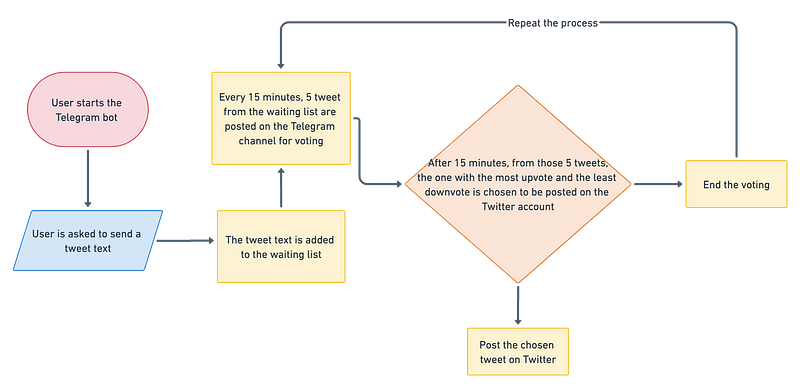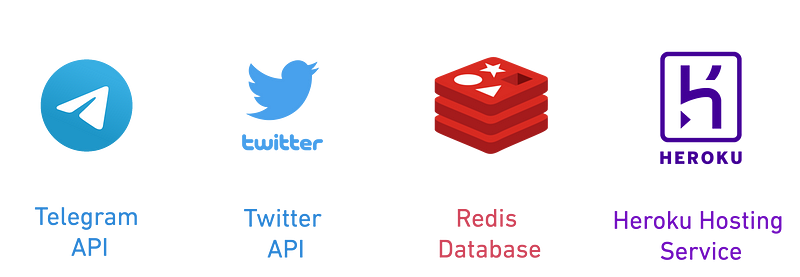Empowering Anonymous Voices: The Tweetless Twitter Bot Journey
Written on
Chapter 1: The Concept Behind Tweetless
The allure of anonymity on the internet fascinates me. It opens up numerous opportunities for individuals to express their thoughts and ideas freely, particularly on sensitive or controversial subjects without fear of personal judgment. This inspired me to create a Twitter bot named Tweetless, designed to facilitate anonymous tweeting. Through this platform, users can voice their opinions on various topics, reaching a global audience that they might not typically engage with.
Section 1.1: How Tweetless Works
Now that you grasp the basic idea, let’s delve into the operational mechanics of Tweetless.
To send an anonymous tweet via Tweetless, users must submit their content through a dedicated Telegram bot I developed. This bot acts as a submission form, prompting users to provide their tweets. Upon submission, tweets enter a queue, and every 15 minutes, five of the oldest entries are posted on a Telegram channel for community voting—similar to Reddit's upvote/downvote system.
By implementing this voting mechanism, I aimed to empower the community to curate the types of tweets they wish to see on Tweetless, effectively filtering out inappropriate or irrelevant submissions. After a 15-minute voting period, the tweet receiving the highest number of upvotes and the lowest number of downvotes is automatically selected for posting on Tweetless. This cycle continues around the clock.

Section 1.2: The Technology Stack
At first glance, you might think that executing a project like this is overly complex. However, it's quite manageable for someone with intermediate programming skills. Here’s a brief overview of the technology stack I utilized and their functions.

- Telegram API: This API enabled me to create an automated system capable of receiving user messages, posting them on a Telegram channel, and collecting voting results.
- Twitter API: Similarly, the official Twitter API was employed to publish the selected tweets on the Tweetless Twitter account every 15 minutes.
- Redis Database: I opted for Redis due to its ability to simplify traditionally complex coding tasks. It allows me to store, retrieve, and utilize user tweet data in real-time.
- Heroku Hosting Service: Heroku provided a free hosting solution, allowing my project to run continuously. It serves as a robust cloud platform akin to Amazon AWS and Microsoft Azure.
Chapter 2: Reflecting on the Journey
How To Create A Twitter Bot With Python | Build a Startup #4 - YouTube
The experience of building an entire startup solo has been incredibly rewarding. I've gained valuable insights into interacting with the Twitter API and developing autonomous applications. Careful planning and structuring of the database enabled me to handle large amounts of data efficiently.
The future of this startup remains uncertain and hinges on public interest in anonymous tweeting as well as the community’s responsibility to moderate the content.
Ultimately, I hope my project serves as an inspiration and proves beneficial to others. I welcome your feedback and suggestions on how to enhance this startup in the comments section!
How to build a Twitter bot that Tweets for you - YouTube